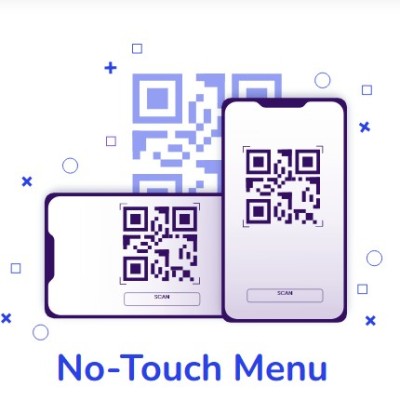In today’s fast-paced healthcare environment, clinic management software has become an essential tool for streamlining operations, improving patient care, and enhancing overall efficiency. However, the success of such software depends largely on how well your staff is trained to use it. Effective training ensures that your team can leverage the software’s full potential, minimizing errors and maximizing productivity.
This article provides a comprehensive guide on how to train your staff on using clinic management software effectively, ensuring a smooth transition and long-term success.
Why Training is Crucial for Clinic Management Software
Clinic management software is designed to handle a wide range of tasks, including appointment scheduling, patient records management, billing, and reporting. However, without proper training, staff may struggle to use the software effectively, leading to:
- Errors in data entry
- Inefficient workflows
- Frustration and resistance to change
- Reduced patient satisfaction
Effective training not only helps staff understand the software’s features but also builds confidence and encourages adoption.
Steps to Train Your Staff Effectively
1. Assess Your Staff’s Needs
Before starting the training process, assess the skill levels and needs of your staff. Identify:
- Technical proficiency: Are your staff members comfortable using computers and software?
- Roles and responsibilities: Different staff members (e.g., receptionists, nurses, doctors) will use the software for different tasks.
- Learning preferences: Some staff may prefer hands-on training, while others may benefit from written guides or videos.
This assessment will help you tailor the training program to meet the specific needs of your team.
2. Choose the Right Training Method
There are several training methods to consider, depending on your staff’s needs and the complexity of the software:
- In-Person Training: Ideal for hands-on learning and immediate feedback.
- Online Training: Convenient for remote staff or those who prefer self-paced learning.
- Workshops and Seminars: Great for group learning and team-building.
- Video Tutorials: Useful for visual learners and quick reference.
- User Manuals and Guides: Provide a written resource for staff to refer to when needed.
A combination of these methods often works best to cater to different learning styles.
3. Start with the Basics
Begin the training by introducing the software’s core features and functionalities. Focus on:
- Navigation: How to access different modules (e.g., appointments, patient records, billing).
- Data Entry: How to input and update patient information accurately.
- Common Tasks: How to schedule appointments, generate reports, and process payments.
Ensure that all staff members are comfortable with the basics before moving on to advanced features.
4. Provide Role-Specific Training
Different staff members will use the software for different purposes. Tailor the training to their specific roles:
- Receptionists: Focus on appointment scheduling, patient check-ins, and communication tools.
- Nurses and Doctors: Emphasize patient records management, treatment plans, and prescription tracking.
- Billing Staff: Train on invoicing, insurance claims, and financial reporting.
- Role-specific training ensures that each team member can perform their tasks efficiently.
5. Encourage Hands-On Practice
Hands-on practice is one of the most effective ways to learn. Provide staff with a demo version of the software or a sandbox environment where they can practice without affecting real data. Encourage them to:
- Perform common tasks (e.g., scheduling an appointment, updating patient records).
- Explore the software’s features and settings.
- Ask questions and seek help when needed.
6. Offer Ongoing Support
Training doesn’t end after the initial sessions. Provide ongoing support to help staff overcome challenges and stay updated on new features:
- Help Desk: Set up a dedicated support team to address technical issues.
- Refresher Courses: Offer periodic training sessions to reinforce learning.
- Feedback Mechanism: Encourage staff to share their experiences and suggest improvements.
7. Monitor Progress and Evaluate Effectiveness
Track your staff’s progress and evaluate the effectiveness of the training program. Use metrics such as:
- Error rates: Are there fewer mistakes in data entry or billing?
- Efficiency: Are tasks being completed faster?
- Staff feedback: Are employees comfortable using the software?
- Patient satisfaction: Are patients experiencing smoother interactions with your clinic?
Use this data to identify areas for improvement and refine your training program.
Tips for Successful Training
Start Early: Begin training well before the software is implemented to give staff time to adjust.- Keep It Simple: Avoid overwhelming staff with too much information at once.
- Be Patient: Allow time for staff to learn and adapt to the new system.
- Lead by Example: Managers and supervisors should also be proficient in using the software.
- Celebrate Successes: Acknowledge and reward staff members who excel in using the software.
Common Challenges and How to Overcome Them
- Resistance to Change: Some staff may be hesitant to adopt new technology. Address this by highlighting the benefits of the software and involving them in the training process.
- Technical Difficulties: Provide adequate technical support to resolve issues quickly.
- Lack of Time: Schedule training sessions during quieter periods or offer flexible learning options.
- Inconsistent Use: Ensure that all staff members are using the software consistently to avoid confusion.
Conclusion
Training your staff on using clinic management software effectively is a critical step in ensuring the success of your clinic’s digital transformation. By assessing your staff’s needs, choosing the right training methods, and providing ongoing support, you can empower your team to use the software confidently and efficiently.
Remember, the goal is not just to implement new technology but to create a seamless and productive workflow that benefits both your staff and your patients.
FAQs
How long does it take to train staff on clinic management software?
The duration depends on the complexity of the software and the staff’s technical proficiency. Typically, basic training takes 1-2 weeks, with ongoing support for advanced features.
What if some staff members struggle with the software?
Provide additional one-on-one training, hands-on practice, and access to support resources to help them overcome challenges.
Can we train staff remotely?
Yes, online training, video tutorials, and virtual workshops are effective options for remote staff.
How often should we conduct refresher training?
Refresher training should be conducted every 6-12 months or whenever the software is updated with new features.
What are the signs of successful training?
Successful training is indicated by reduced errors, improved efficiency, positive staff feedback, and higher patient satisfaction.









